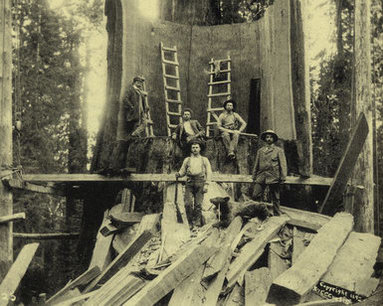“To abstain from enjoyment which is in our power, or to seek distant rather than immediate results, are among the most painful exertions of the human will” -
Nassau William Senior
Have you ever put off finishing a project until the last second? Or wondered why you're bad at saving your money for retirement? Chances are that you have, and it may have to do with a disconnect from "your future self." The disconnect comes from this unconscious belief that the person you are today is a separate entity from the person you are in the future. The future you wants to retire at 55, but today you wants to take a trip to Hawaii. The future you should be a successful CEO, but the present you doesn't want to work past 5:00. We have these notions on how we want the future to be, and a lot of times we are incapable of reconciling our present actions with our future wants.
What does this mean? Keith Chen , an economics professor at UCLA, proposes a rather interesting idea. As a native English-speaking Chinese person he often wondered at the differences between the two languages, and in particular the difference in their future tenses. Upon doing a some further research, he realized that this difference in tenses was visible across the board in many languages. Where in English one say "it will rain tomorrow" in German one would say "Morgen regnet es" which translates literally to "It rains tomorrow." This way requires that English speakers make an inherent distinction between the present and the future, in a way that German does not. This leads us to distinguish the two by saying that English has a strong future-tense while German has a weak-future tense, and it is believed that this difference could be what causes the present-future disconnect.
This may seem a little far fetched, but the effects of language on perception are well known. Keith takes this idea and applies it to economics. He believes that the separation of present-self from future-self affects us not only on a personal scale, but influences the amount of money that whole countries save. Not only does this apply to savings, it correlates to the amount of risk that citizens take in their daily lives. For example, those countries with a stronger future tense are statistically more likely to engage in impulse buying, smoking and engaging in unprotected sex. Hopefully by knowing this information, an individual can act more consciously in the way they make their decisions and we can all do a better job of preparing for our future. The full TED talk by Professor Chen can be seen below.



 Employees Are Silent
Employees Are Silent





















 This week, Denver District Attorney Mitch Morrissey returns to Connect & Collaborate to discuss the troubling problem of sex trafficking, the challenges of prosecuting the criminals and assisting the victims. He introduces us to Becky Bullard, Project Director for the
This week, Denver District Attorney Mitch Morrissey returns to Connect & Collaborate to discuss the troubling problem of sex trafficking, the challenges of prosecuting the criminals and assisting the victims. He introduces us to Becky Bullard, Project Director for the 








 The buyer in Korea had one condition for the 40% cash payment. He wanted a
The buyer in Korea had one condition for the 40% cash payment. He wanted a  Assistance from The Small Business Administration (SBA)
Assistance from The Small Business Administration (SBA)

